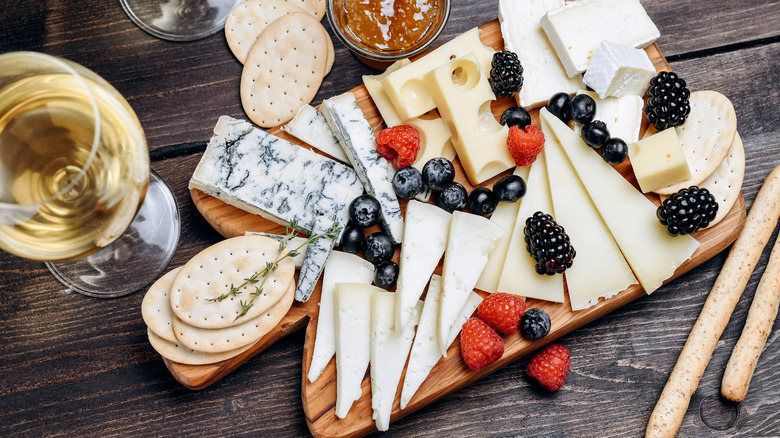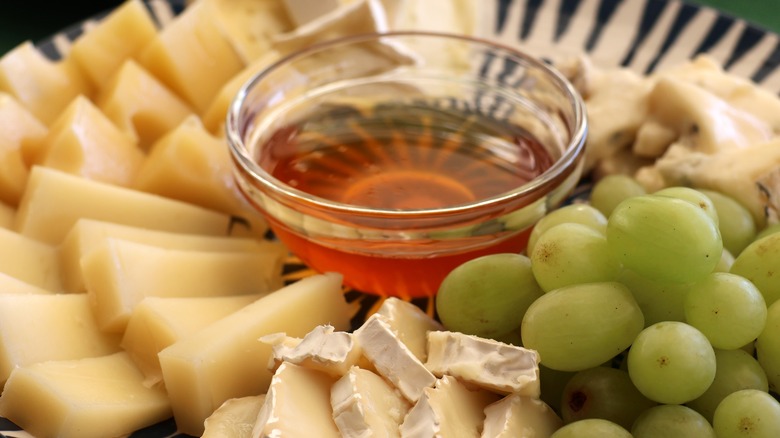Thoughtfully Pair Cheeses With Other Ingredients For Elevated Charcuterie
We may receive a commission on purchases made from links.
When arranging a charcuterie board, it's important to focus on two things — how well the components pair and how good they look together. There are lots of ways to maximize the visual impact of your charcuterie board, but more care is needed to ensure they all taste good together. Sure, there may be a lot of variety on the platter and you can reasonably expect your guests to mix and match. However, your charcuterie selection should ideally nudge the eater in a particular direction, increasing the chances of creating a scrumptious bite that'll have them reaching for more.
Of the diverse cheeses fit for a charcuterie board, some are versatile enough to pair with quite a few sweet and savory accompaniments. Others truly shine when combined with a particular contrasting flavor. The idea is to have both versatile and more unique cheeses on your platter for maximum success. To help us figure out which ones they ought to be, we turned to Dominick DiBartolomeo, owner and president of The Cheese Store of Beverly Hills and Domenico's Foods. He took us through the flavor profiles of several popular varieties, explaining why they pair well with certain foods, when to use contrasting accompaniments, and why some cheeses are more versatile than others.
Complementing and contrasting is the secret to pairing charcuterie cheeses
Ultimately, keep in mind how charcuterie ingredients will complement and contrast with one another. One of the best cheeses to have on a charcuterie board is Gruyere. This Swiss cheese has a creamy, mildly nutty flavor that becomes more prominent as the cheese ages. Per Dominick DiBartolomeo, Gruyere's versatility makes it a staple and he recommends pairing it with onion marmalade or a sweet-savory chutney. While young Gruyere melts well, an older, bolder version is more suited to being eaten raw. This cheese will pair with just about anything, including olives, dried fruit, honey, and even other cheeses. In a pinch, you can also substitute an aged Gouda for Gruyere.
The other crowd-pleasing cheese board staple is Parmigiano. Make sure you use the real stuff (authentic Parmigiano is often imprinted with dots). DiBartolomeo offers an interesting insight, saying: "Parmigiano is almost limitless because you can have a sweet condiment, savory condiment and of course Prosciutto di Parma. Prosciutto works very well with Parmigiano because in some cases the whey from the Parmigiano is fed to the pigs that turn into the beautiful legs of Prosciutto!"
For soft cheeses, consider a goat's cheese like chèvre for your charcuterie board. It has a distinct tangy flavor and creamy texture that pairs well with something sweet like a seasonal jam. For the best texture, remember to let your cheese rest at room temperature before serving. DiBartolomeo also recommends a sweet pairing like honey or fruit for funky blue cheeses. While there may be fewer takers for pungent cheeses, they bring a sense of adventure to charcuterie boards and, when paired correctly, can even convert naysayers to fans.

